The belief of a Supreme natural being has never been a doubt in African culture. Even before Europeans came and introduced Christianity, Africans believed that there was a force greater than the universe that created everything on the Earth. In most African religions, the supreme God is a distant being no longer involved in day-to-day human life.
Although we like to refer to God as a Him, Africans believe that God was neither he or she, God is ALL. Most African cultures believe that God lived amongst them in the past and left because humans were committing too many sins. God returned to the Kingdom of Heaven and appointed lesser African Gods and Goddesses that had “superpowers.” Gods and Goddesses had the power of earth, fire, rain, etc and Goddesses are probably the most respected. Each deity has their own superpower designed to all come together to help out life on this Earth as well as its inhabitants. Depending on what part of Africa we are talking about, there are over 20 African deities, most of them being “male.” Most cultures believe and pray to the spirits, which can be any and everything from the oceans to the trees.
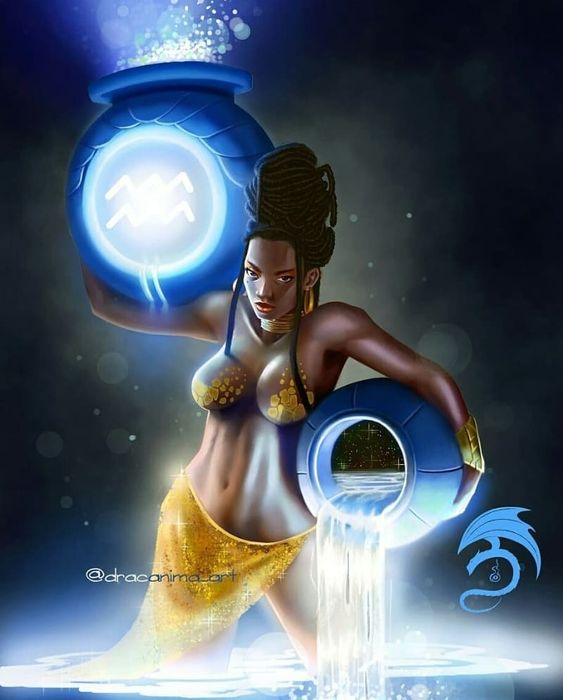
ORISHAS(ORIXA/ ORISA)
Orishas are the deities of the Yoruba people of southwestern Nigeria and admired by the Edo of southeastern Nigeria, the Ewe of Ghana, Benin, and Togo; and the Fon of Benin (who refer to them as voduns). Yoruba is one of the 10 largest religions in the world, with about 100 million global practitioners.The underlying religious concept of the Orishas is mostly the same among the West African people.
The word Orisha is related to several Yoruba words referring to the head, the main, the witness, and the shell. The main one, ori, refers to the physical head of a person’s body. This visible ori, however, serves as the vessel for an invisible ori, the ori-inu or internal head, the indwelling spirit of a person and the deeper part of that individual’s personality. The ori-inu exists before birth; it comes from God and determines an individual’s character and fate. The ori-inu rules, guides, and controls a person’s actions. The witnessing object for the ori-inu is a shrine for the head called ile ori (house of the head), a pointed crown-like container covered with cowrie shells, whose white color indicates purity and good character. In themselves the cowrie shells symbolize wealth, because they were once a source of economic exchange.
The Nigerian scholar J. Omosade Awolalu divided the orishas into three categories:
primordial divinities, deified ancestors, and personified natural forces and phenomena.
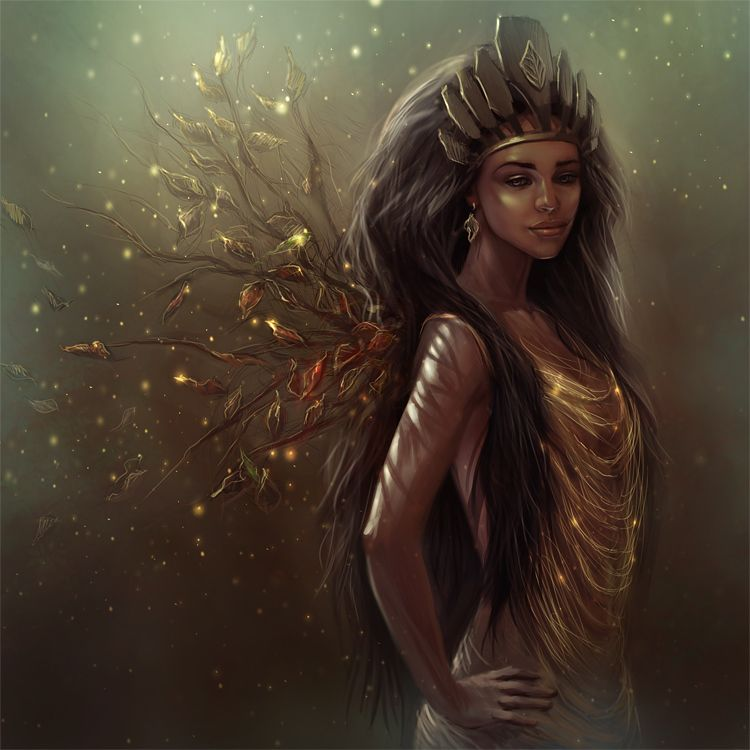
Primorial Divinities are those that existed long before the creation of the world existing directly from God. They are ara orun, people of heaven. You may be familiar with these Gods in Greek terms such as Uranus (Father Sky) and Gaia (Mother Earth). But, I believe Greek Mythology came from African Mythology roots.
Deified ancestors were kings, heroes and heroines, warriors, and founders of cities who had a major influence on the lives of the people and on Yoruba society through their contributions to culture and social life. The ancestors had a unique way of achieving this kind of control and interdependence by making offerings and sacrifices. Later they disappeared by sinking into the ground, rising into the heavens on chains, committing suicide, or turning to stone. This wasn’t considered an actual death but a type of metamorphosis into an Orisha. The children of these Orisha started sacrificing to them and continued traditions and ceremonies that the Orisha also did before their time. This came to be a tradition for generation to generation to come.
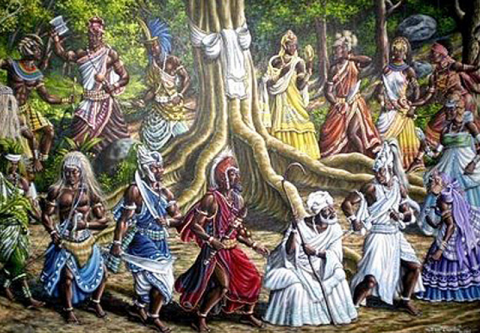
Personified natural forces or any element of the natural world that has useful functions for human beings are Orishas. The earth; rivers, lakes, mountains, trees, and the wind. The Orishas are the peace between humanity and the forces of the natural world. They control what humans cannot.
POPULAR AFRICAN GODDESSES
Oshun
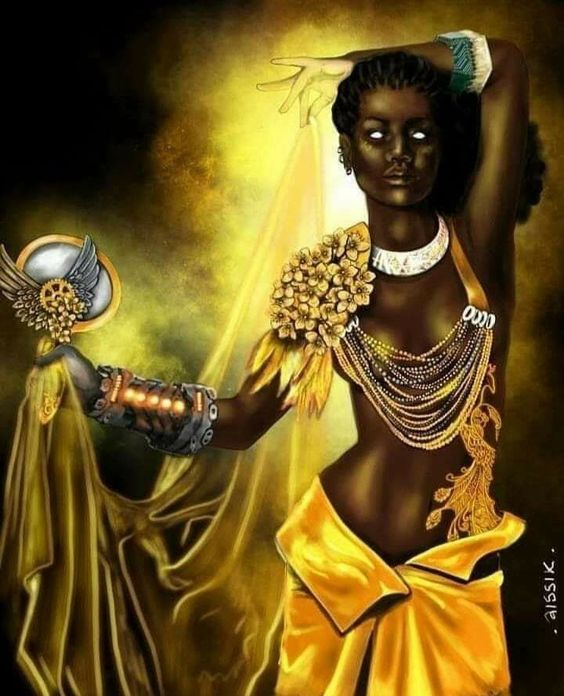
The Goddess of love, freedom, fertility, and water, using her abilities to create and heal the world. According to the Orisha legend, Olodumare, the God of all Gods, sent Oshun to earth to create a world with a group of male deities. She wore a vibrant gold dress and sparkling jewelry matching her dark, beautiful, and flirtatious looks. While they admired her beauty, the male gods didn’t think that they needed Oshun’s help to create a world. She became frustrated at the lack of appreciation so she left and went to the moon, where she lounged and admired herself in the mirror knowing they would be back for her help soon enough.
Not too long after, the Earth dried. Plants withered, animals died, life was ending. The Gods went to Olodumare confused, not putting two and two together. Olodumare realized Oshun was not around and scolded the Gods claiming that Oshun was much needed for Earth to survive. Without her love, beauty and ability to create life, there would be no Earth. The Gods returned to Oshun begging her to come back and like the forgiving Goddess she was, she accepted, but not without telling them to never disrespect her that way again. When she returned, the Earth was once again thriving. Women today who possess the same energy of Oshun are independent, confident, and generous, loving freely and understanding the importance of relationships. These women are kind and helpful, but never a martyr.
OYA
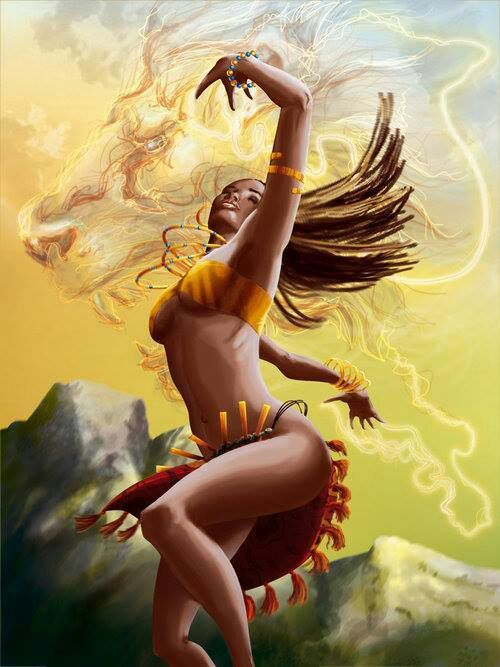
The Goddess of weather, known to be one of the most powerful. She was a spirit sent by one of the three manifestations of Olodumare. Oya and her brother Shango were born to the Great Sea Mother, goddess Yemaya, but it’s not clear who their father was. According to some sources, Oya was barren. It is said, one day she took a sacred cloth with the colors of the rainbow and made a sacrifice out of it (to whom she made the sacrifice isn’t known) miraculously giving birth to 9 children: four sets of twins and the ninth child, Egungun. This is how she came to be known as the “mother of nine.”
Oya is also known as a strong protectress of women, who call on Her to settle disputes in their favor. They also call her the Orisha of change using her machete or sword to clear a path for new growth. She is believed to watch over the newly dead and assist them as they make the transition from life. Associated with the Vodou Lwa Maman Brijit, who, like Oya, guards graveyards.
Oya’s powers of change are swift and guaranteed. If you are too busy, too tired, or a big procrastinator, Oya is known to come and force that change to happen. The Goddess says that the earth must be dug up before anything can be planted and that change always brings you what you need on your path to wholeness.
ALA
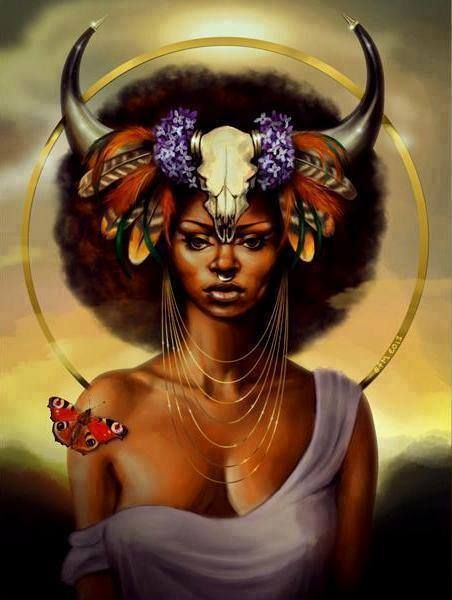
Ala (also known as Ani, Ana, Ale, and Ali in varying Igbo dialects) is the Earth Mother Goddess; female Alusi (deity) of earth, morality, death, and fertility in Odinani. She is the mother goddess of the earth, ruler of the underworld, guardian of the harvest, and goddess of fertility for both people and animals.
The Igbo people of Nigeria call Her the mother of all things. She is present at the beginning of the cycle of life, making children grow in their mother’s womb and she is there at the end of the cycle, to receive the souls of the dead into her own womb.
According to Igbo tradition, Ala sends a sign such as a snake or a bee’s nest to tell her priests where to build a Mbari. Groups of men and women work together to assemble the structure which can take years and is considered a sacred act. Once the Mbari is built, the houses are left alone to decay. New houses must continually be produced, which ensures that the Mbari tradition will be carried on by younger members of the group.
She also rules over human morality and is in charge of Igbo law, known as Omenala. If someone commits a crime or moral injustice, they are said to have insulted Ala herself, known as nso Ala. One of the most common ways to pay tribute to Ala is to light candles. If you light a candle in the morning and welcome Ala and spring, it’s believed that you’ll be blessed with fertility and creativity.
AJA
A very popular Orisha among the Nigerian Goddesses and Gods. She represents the soul of the woodland and the creatures inside it, as well as homegrown healers. She is mainly considered a goddess of the forest, but is also a goddess of animals.
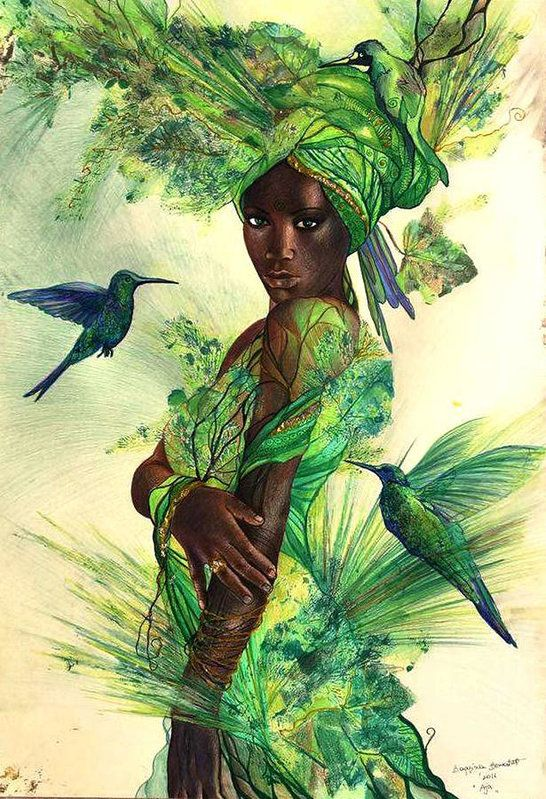
In her forests she would find plants with medicinal properties and mix the herbs and roots and other plant parts together to find cures for the sick. Aja shared much of her knowledge with humans waiting for someone to come and find her to share it with. This person was usually a shaman in training, or someone of the like.
She also goes by the name “wild wind.”
It’s believed that if someone is carried away by Aja and then returns, they become a powerful “jujuman” or (babalawo). The journey supposedly will have a duration of between 7 days to 3 months, and the person is thought to have gone to the land of the dead or heaven. Aja is considered one of the rarest Earth Gods because she reveals herself to humans and not to harm or scare them.
Nana Buluku
The supreme Goddess, the mother of all mothers, she is an ancient goddess in the image of an old woman who is believed to be the creator of the world including the cosmos. She gave birth to the sun(Lisa) and the moon(Mawu), her twin children. She is believed to be the most revered deity and the genesis of any form of worship and religion in West Africa.
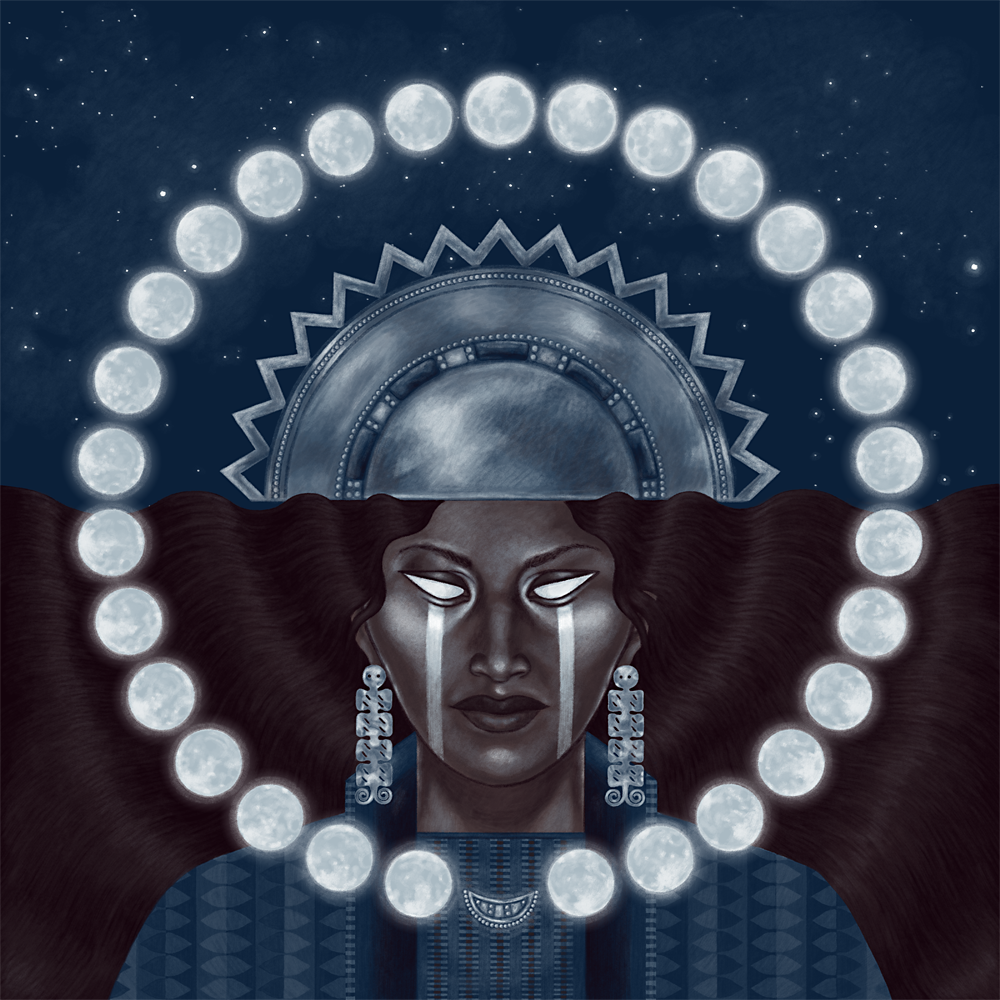
Several African societies worship Nana Buluku. Among the Fon and Ewe in Ghana, she is known as Nana Bukuulu and Nana Bukuu; and Nana Kuruku among the Yoruba of Nigeria. The Igbos of Nigeria refer to her as the Olisabuluwa. The Akans of Ghana call her Nana Buruku. In many folktales regarding her story, they say she retired and left the world in the hands of her twin children. Many traditional societies fear and respect twins, especially those that come as boy and girl.
Powered by WPeMatico


